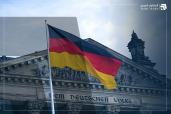How will Federal Reserve decisions reshape financial markets? An analysis of expected scenarios!

Attention is focused on the monetary policy decisions of the U.S. Federal Reserve, which include the interest rate decision, the interest rate statement, and the press conference of the central bank's governor, Jerome Powell, in addition to the quarterly economic forecasts. These decisions are expected to have a profound impact on the dollar and currencies, as well as their effect on commodity prices, U.S. stocks, and digital currencies.
As the announcement date for the U.S. Federal Reserve's decisions approaches, financial markets remain on high alert for any signals clarifying the future course of monetary policy. Here is a look at the circumstances surrounding the decision-making within the bank:
First: The U.S. Economic Situation and Its Impact on Federal Reserve Decisions
In recent months, the U.S. economy has seen the release of pivotal economic data, most notably the inflation data released by the U.S. Bureau of Labor Statistics, which showed that the Consumer Price Index rose year-over-year by 2.7% in November, matching market expectations, but it recorded a slight increase compared to the previous month. As for core inflation, which excludes food and energy prices, it remained steady at 3.3%, the same rate recorded in the previous month.
Additionally, the U.S. labor market presented a mixed picture during the same period, with the economy adding 227,000 new jobs in November, exceeding analysts' expectations of 200,000 jobs. However, the unemployment rate rose to 4.2%, which also aligned with forecasts.
Regarding consumer spending, the Personal Consumption Expenditures Price Index showed a monthly growth of 0.3% and a yearly increase of 2.7% in September, indicating the strength of U.S. consumer spending.
These economic indicators reflect a mix of high inflation and an improving labor market, prompting the U.S. Federal Reserve to adopt a more cautious approach in its decisions on interest rates, with the possibility of hinting at a temporary halt to rate cuts until additional data is released next year.
Second: Expectations of Major Banks Regarding Federal Reserve Decisions
Major banks, such as Goldman Sachs and Morgan Stanley, expect the Federal Reserve to lower the interest rate by 25 basis points during the upcoming meeting. Goldman Sachs experts believe that the central bank may indicate a slowdown in the pace of rate cuts in 2025, ruling out any additional cuts in January due to the continued strength of the labor market and the steadiness of inflation rates.
On the other hand, Morgan Stanley analyses indicated that the latest inflation report supports a rate cut, but future policy will heavily depend on the trend of upcoming economic data. The report noted that the Federal Reserve might become more cautious in its future guidance after the December meeting.
Third: Statements from Monetary Policy Makers within the U.S. Federal Reserve and Their Directions
Statements from U.S. Federal Reserve officials in recent times have been characterized by caution and gradualism. Jerome Powell, the Fed governor, confirmed during the "Dealbook" summit organized by The New York Times, that the U.S. economy is highly resilient, expressing confidence in the Fed's ability to balance growth support with inflation control.
For her part, Federal Reserve member Adriana Kugler clarified that the bank will continue to make its decisions based on economic data without a pre-defined path. Federal Reserve member Austan Goolsbee stressed that inflation data shows fluctuations that make forecasting difficult, but he expressed confidence that the coming year will witness a notable decline in prices.
For her part, Mary Daly, president of the Federal Reserve Bank of San Francisco, indicated that more work is needed to achieve the 2% inflation target, which means a pause in the rate-cutting cycle.
Fourth: Expected Scenarios for Federal Reserve Decisions:
The first scenario entails a rate cut of 25 basis points with indications of concerns about the return of rising inflation and the continued strength of the labor market, which may lead the bank to pause further rate hikes. This scenario may support the U.S. dollar and result in a decline in gold prices, U.S. stocks, and digital currencies.
The second scenario includes a rate cut while hinting at a phased continuation of rate cuts next year, especially if inflationary pressures decrease further. In this case, the U.S. dollar may decline while gold prices, stocks, and digital currencies, including Bitcoin, rise.
Read also:
The dollar is declining before the Federal Reserve's decision









